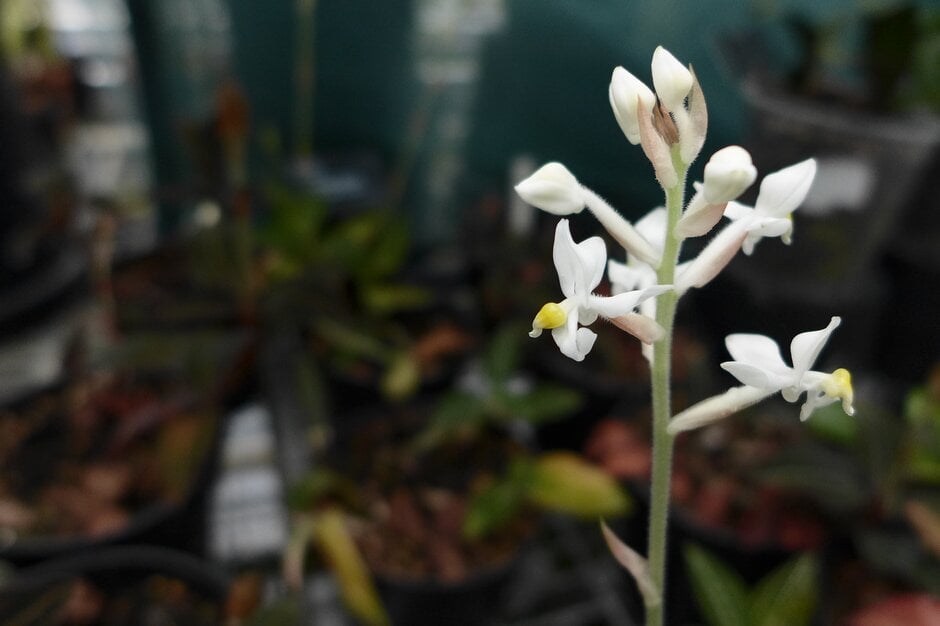Ludisia discolor
black jewel orchid
A terrestrial orchid with a creeping rhizome and velvety, dark purple-brown leaves, 4-7cm long with red or gold veins; flowers to 2cm long are borne on an 8cm stem and are white with a yellow lip
Size
Ultimate height
0.1–0.5 metresTime to ultimate height
2–5 yearsUltimate spread
0.1–0.5 metresGrowing conditions
Moisture
Well–drainedpH
NeutralColour & scent
| Stem | Flower | Foliage | Fruit | |
| Spring | Green | White | Gold Purple Red | |
|---|---|---|---|---|
| Summer | ||||
| Autumn | ||||
| Winter |
Position
- Partial shade
Aspect
North–facing
Exposure
Sheltered Hardiness
H1ABotanical details
- Family
- Orchidaceae
- Native to GB / Ireland
- No
- Foliage
- Evergreen
- Habit
- Columnar upright
- Genus
Ludisia is one of a small group of terrestrial orchids grown for their ornamental leaves rather than their flowers
- Name status
Correct
- Plant range
- Himalaya to Java
How to grow
Cultivation
Grow in a shallow pot, in an airy position with good humidity. Grows best in houseplant compost or a mixture of medium to coarse bark with a small amount of sphagnum moss. Allow the compost to dry out between waterings and feed frequently with orchid fertiliser. See Orchids: indoor cultivation for further information
Propagation
Plant the fleshy stems that break off in sphagnum moss until roots form - approximately 6 weeks, cuttings can then be potted up into houseplant compost after about 6 months
Suggested planting locations and garden types
- Houseplants
- Conservatory and greenhouse
Pruning
Cut back flower stems when the flowers die
Pests
May be susceptible to aphids, glasshouse red spider mite and mealybugs
Diseases
Generally disease-free
Love gardening
Sign up to receive regular gardening tips, inspiration, offers and more
View our Privacy Policy
Get involved
The Royal Horticultural Society is the UK’s leading gardening charity. We aim to enrich everyone’s life through plants, and make the UK a greener and more beautiful place.

